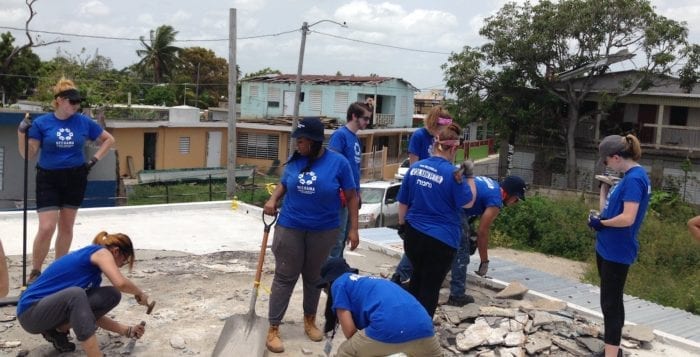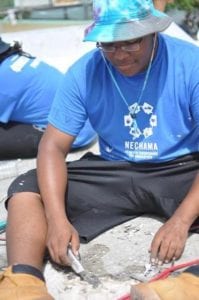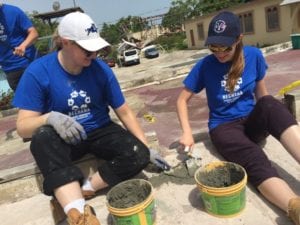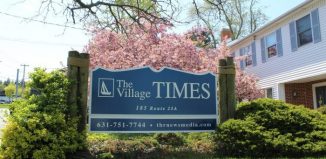Local college students lend a hand to those impacted by Puerto Rico hurricane

As Puerto Rico continues to recover a year after Hurricane Maria left devastation in its wake, some college students reflected on lasting memories of their missions to the island to offer help and support.

This past summer more than 650 State University of New York and City University of New York students along with skilled labor volunteers helped to repair homes on the island through Gov. Andrew Cuomo’s (D) New York Stands with Puerto Rico Recovery and Rebuilding Initiative, according to the governor’s website. During a 10-week span, five deployments of volunteers worked on the island with the goal of repairing the roofs of 150 homes. By the end of the summer, the volunteers fixed the roofs of 178.
Peter Velz, SUNY assistant vice chancellor for external affairs, said since October 2017 the university system was working on engagement with Puerto Rico. On March 16 students from SUNY Alfred State and Geneseo went down for a week.
He said he believes the interaction with the homeowners was probably the most impactful for the students, and the residents they met in Puerto Rico tried to pay them back the best they could.
“It wasn’t paying them back financially,” Velz said. “Kids would make them bracelets or kids would make them pictures or the families would make them lunch. I really think that was probably the most lasting impact for the students, was working in the homes with the homeowners and providing them shelter.”
Rebecca Mueller, one of 21 Stony Brook University students who volunteered, traveled to the island in July, as did Joseph VanderWaag, who attends Suffolk County Community College’s Ammerman Campus.
“I wish there was more that we could do. But I think that the main goal for the organization, while we were there, was to make it livable at that point.”
— Rebecca Mueller
Mueller, 23, of Coram, a graduate student working toward her master’s in social work, said when she received an email from SBU looking for students to travel to Puerto Rico she knew she had to help.
“I knew things there still weren’t that great from hearing different stories, and I felt like not as much help was given to them as it should have been,” she said. “So, when I saw an opportunity where I could actually help to do something, I knew I couldn’t pass it up.”
VanderWaag, 20, of Smithtown, who is in his last semester at SCCC, echoed those sentiments.
“It was so devastating to see that these were our citizens not really getting any help,” he said.
Traveling to Catano and surrounding towns where her group was working, Mueller said she saw houses with no roofs, windows or doors. She worked on three homes during her stay, and said the students would climb to the top of roofs and roofers with the nonprofit NECHAMA — Jewish Response to Disaster showed them what to do.

Two of the buildings she worked on had second stories before Hurricane Maria, but the upper levels were destroyed by the storm, and the volunteers had to turn what was left into roofs by scraping up tiles, finding cracks, grinding them to open them up and then sealing with cement. The volunteers then primed and sealed the new roofs to make them waterproof.
“I wish there was more that we could do,” Mueller said “But I think that the main goal for the organization, while we were there, was to make it livable at that point. Because they couldn’t even live in the houses because every time it rained water was pouring through the ceiling.”
Mueller said she also helped to clean out one man’s bedroom that was unlivable after water damage from the storm. The room had mold and bugs, and his bed, clothes and other items needed to be thrown out.
VanderWaag said the homeowners he met didn’t have a lot of money so whenever there was a leak they would go to the hardware store for a quick fix to patch the roof. When the students weren’t working, he said they would talk to community members about the hurricane’s devastation and the response from the U.S.
“They are a mixture of upset, angry and feeling just almost betrayed,” he said.
VanderWaag said he’ll always remember how appreciative the homeowners were and how one woman cried after they were done. Her husband who was in his 70s would try his best to fix the leaks by carrying bags of concrete up a ladder and patching the leaks.
“It was a huge burden lifted off their shoulders,” VanderWaag said.
“They are a mixture of upset, angry and feeling just almost betrayed.”
— Joseph VanderWaag
Mueller said one family cooked lunch for her group and others working on the house next door every day. She said the students had time to sightsee, and when one tour guide heard what they were doing, he offered to take them on a free tour of the south side of the island. Both she and VanderWaag also visited Old San Juan and saw historic military forts during their trips.
“It really was a life-changing experience,” Mueller said. “Even the people I met from the other SUNY schools, we became so close so quick.”
Pascale Jones, SBU international programs coordinator, joined students for a week to help out. She said when she saw the students in action, she was amazed at how much they already knew about construction and found the whole experience to be humbling.
Originally from Port-au-Prince, Haiti, Jones said she is used to seeing a certain level of devastation but was surprised to see the state of some of the homes.
“It’s Puerto Rico and these are U.S. citizens,” Jones said. “So, I did not expect this devastation so long after the hurricane’s passing. To think, U.S. citizens are living in a way that I would almost equate to a third world country.”






